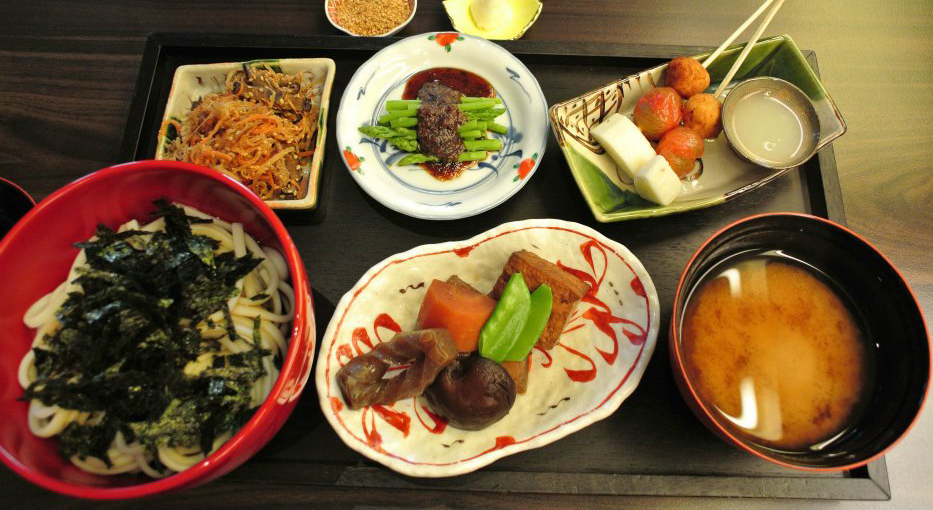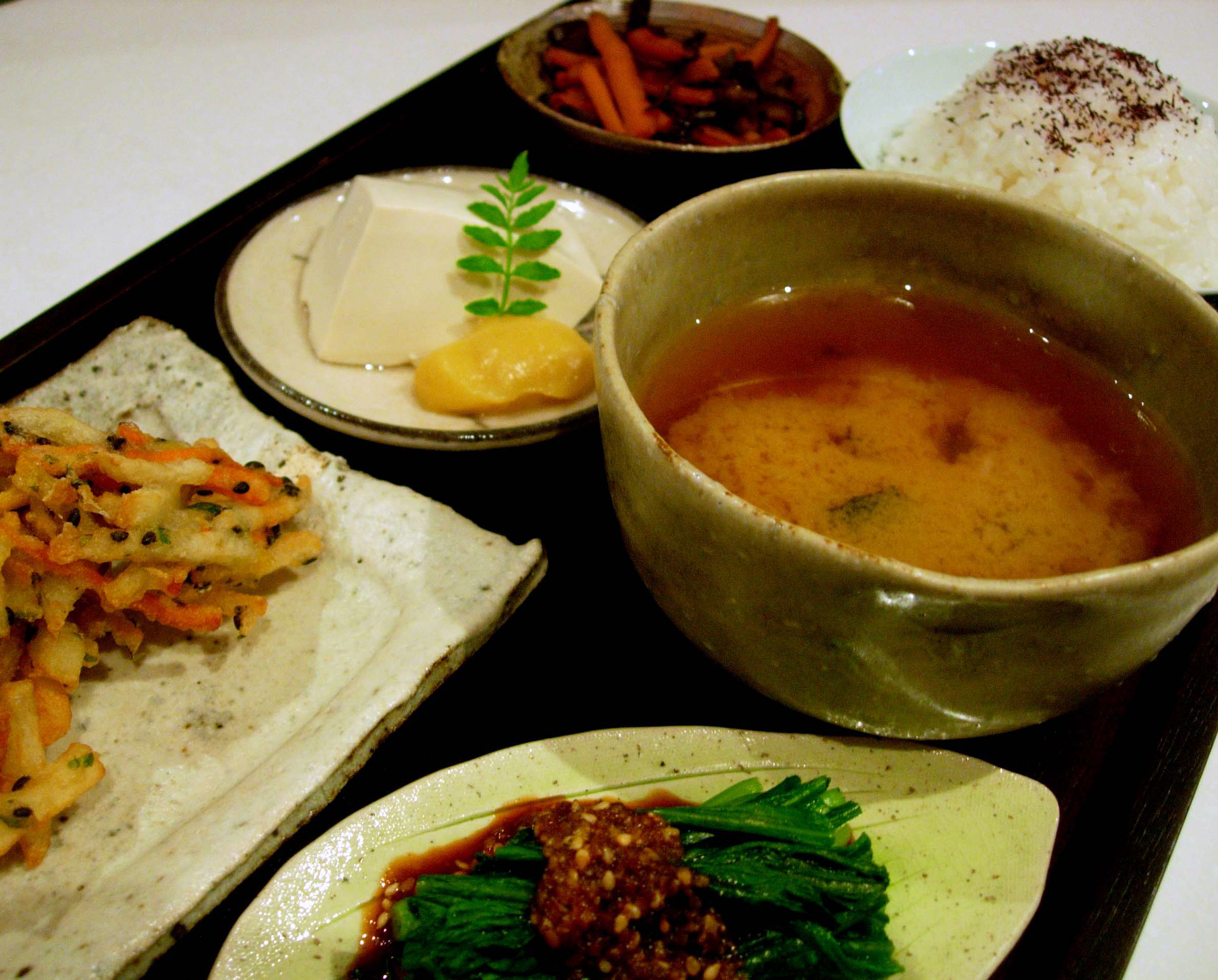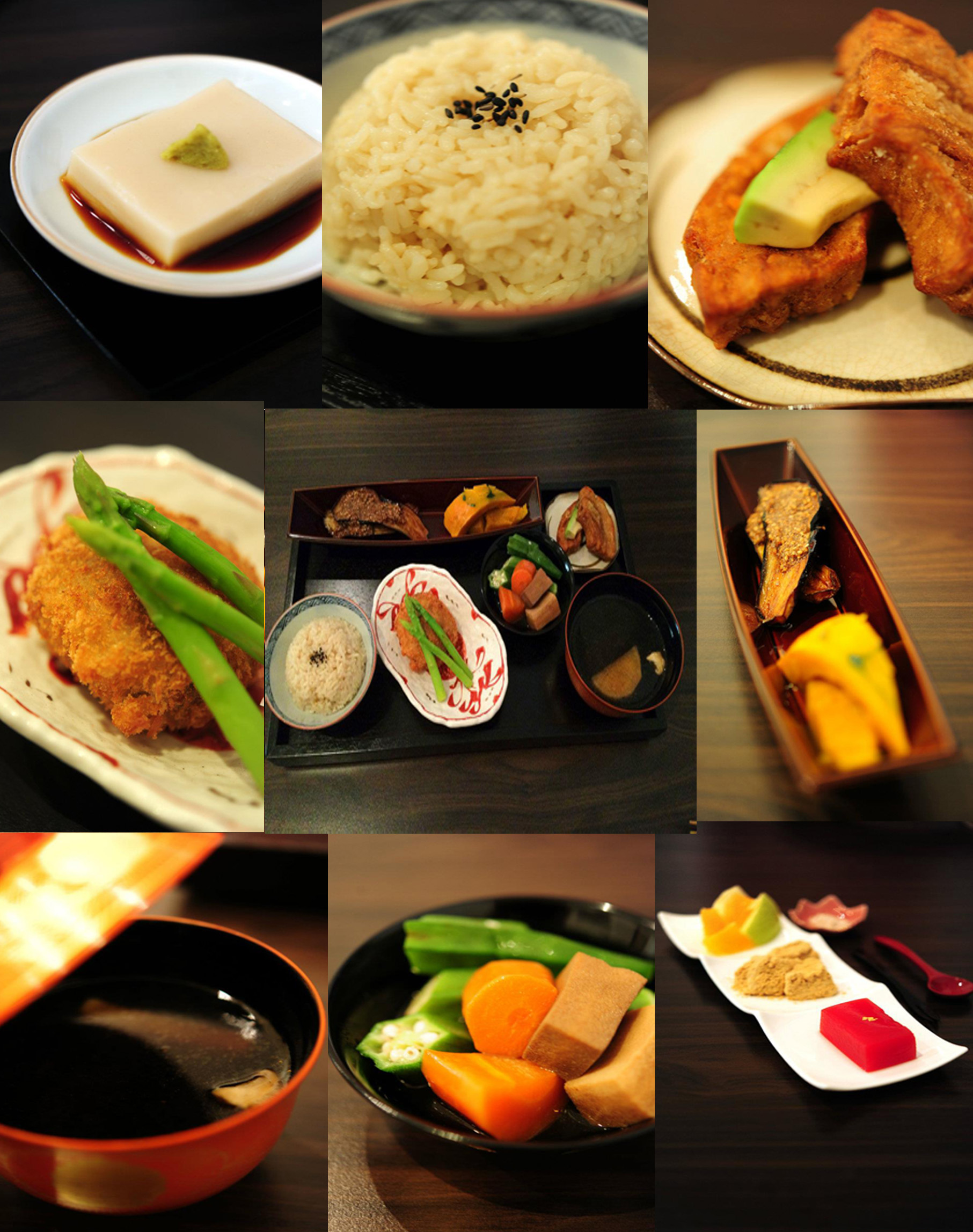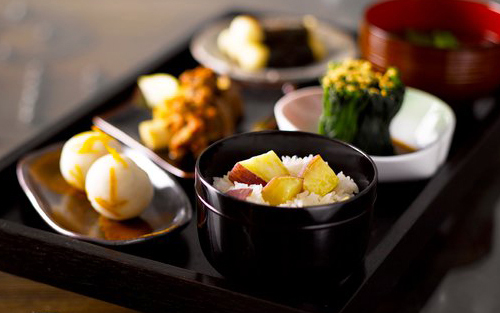Shojin Ryori
is a Japanese vegetarian
cuisine that was originated from Zen
temples and was
popularize in the 13 th Century.
"Shojin" means vigour or energy and "Ryori" means cuisine. Presented in its simplistic Zen
setting, it has an alluring gourmet taste that draws out the natural flavors of the freshest
of vegetables. Like the traditional Japanese tea ceremony, Shojin Ryori is also an art
of Japan 's finest cuisine that is savoured by the locals during special celebrations.
enso kitchen is proud to be the first to introduce this special fine Japanese dining
in Singapore ; taking it from its origin in Japan
to your home or office premise.
Preparing Shojin cuisine is itself an aspect of Zen's training. It involves the
cook's entire personality, not just his cooking skills.
|
This Zen temple cuisine is not just a preparation of food but also a practice of spirituality. It is an art of cooking, which involves delicate preparation, a mindful cooking process to the final presentation. Derived from the Buddhist precept of no killing, Shojin Ryori is completely vegetarian. Shojin Ryori cooks also make sure not to waste any of the ingredients, likewise the Zen practitioners try to eat all of the food prepared during the day, and throw nothing edible away. It is, thus customary in the Zen temples to chant 5 Reflections before eating:
| Reflect on the effort that brings us this food | |
| Reflect on our imperfections as we receive the meal | |
| Reflect on mindfulness to be free from attachment, anger and ignorance | |
| Reflect on taking this food as a medicine to sustain good health | |
| Reflect on the fulfillment of our practice as we accept the offerings |
|
 Winter Winter |
|
 Spring Spring |
Shojin cooking uses seasonal ingredients to capture the flow of nature that would be the best nourishment of the body. All ingredients used are purely vegetables or from plant sources. There is no meat, fish, eggs or diary products and thus make it suitable even for a vegan diet.
The main ingredients used include seasonal vegetables, dried foodstuffs such as seaweed, mushrooms, and tofu products whereas the main seasonings include salt, soy sauce, mirin and miso.
It is typically presented in a tray setting with a variety of dishes. Attention is also placed in its presentation, colors and taste to intrigue the 5 senses. A healthy cuisine, with no artificial colorings and flavorings, that brings high nutritional value.
 Summer
Summer  Autumn
Autumn